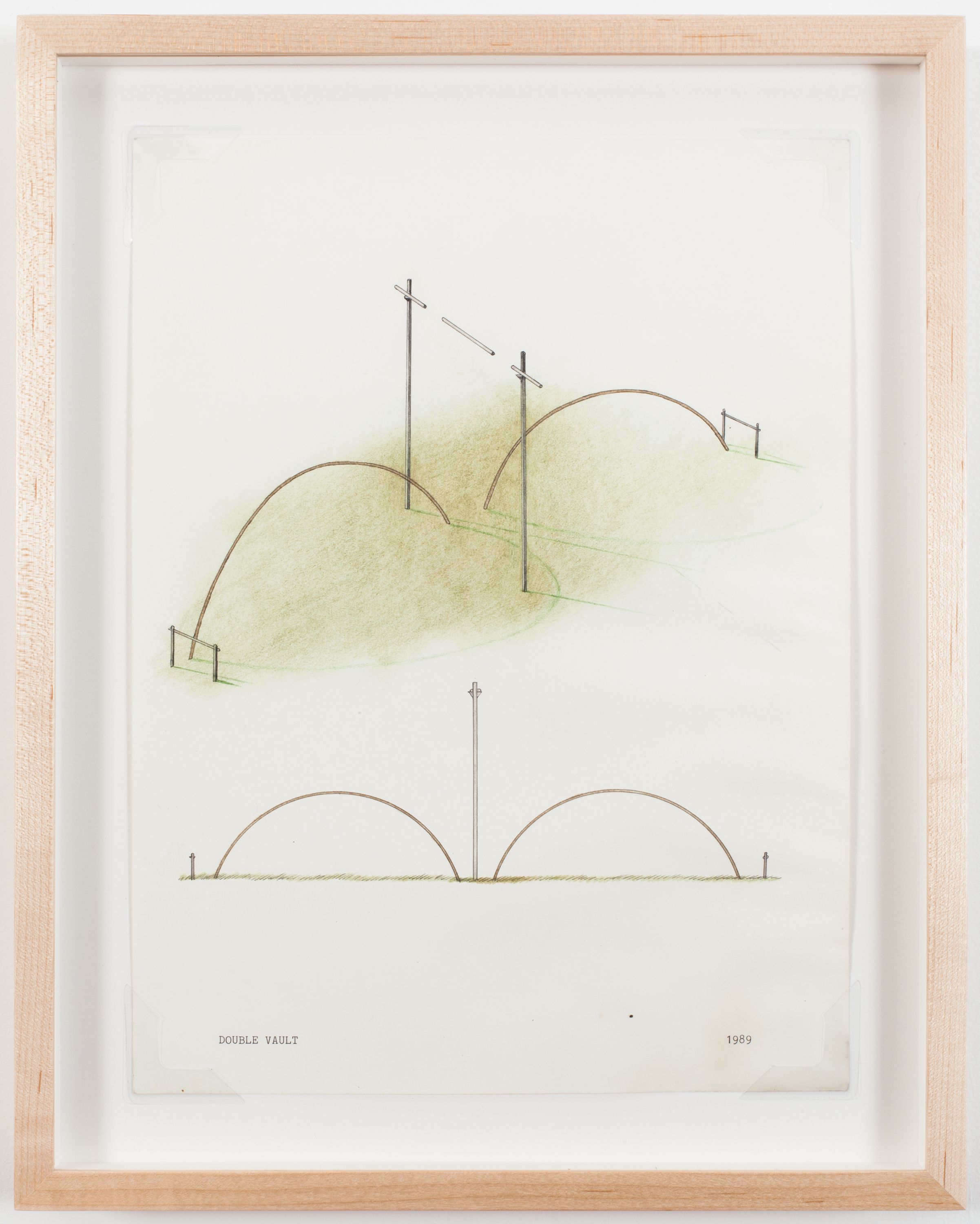
colored pencil and ink on paper
12 x 9 in
30.5 x 23 cm
To Pretend in the Truest Sense: Working with Stuart Sherman
Thomas Zummer
. . . there was always a certain theatricality in the works that Stuart Sherman and I did together, not in the sense of anything (overly) dramatic, nor even in terms of the dramaturgical (though there may have been some occasional references) but in the sense of pretense—an engagement in play, whimsy, humor, the phantasmatic. To pretend is to ‘put forward,’ ‘to set forth,’ ‘to propose’ or ‘position.’ It also means to ‘offer for action, consideration, or acceptance;” to pretend is also to ‘put oneself forward in some character,’ to ‘make believe’; a pretense is thus something that is ‘feigned.’ Stuart was marvelous in this sort of play, the kind of specular imagination that necessarily precedes the making of . . . an object, an artwork, a text, film, a performance, a play . . . a drawing. The moment of pretense, of imagining something that is not yet, is bound up in the creative act, an action or disposition that has many possible consequences, yet has no necessary terminal boundary, an attitude or state that can go, in a sense, anywhere and everywhere, and that can admit of multiple collusions and ‘partners in crime.’ It was our good fortune to have found each other and to have, over the course of many years, traced the contours of a completely unique and endlessly amusing common ground.
-
But what were we doing?
The default category is to define our activities as a collaboration. The longstanding convention of designating authorship, as Michel Foucault has indicated is to define the limits within which culpability might reside, or be conveyed, where transactions, genealogies, taxonomies might be performed. For Stuart and I the performance was much different, more complex, even anarchic—and certainly more fun. One common trait that we shared was an irresistible temptation (maybe even a compulsion) to tamper with things, to overturn, problematize, extend, dilate, contaminate, etc., the usual meanings of things. This not only included the ‘sculptural’ works we proposed, the theatrical sets, the ‘objects’ that were made or drawn, but also extended into the ‘figure’ of the artist, the character and disposition of artistic practice, the very nature of thinking.
Stuart didn’t draw (at least not without a ruler); But I did. In the early 1980s I worked as a fabricator, designer, ghost-writer for a number of (now famous) artists in New York. This is hardly an unusual occupation, and the ‘artworld’ harbors a great many secret genealogies concerning “what actually happened” and “who really did what.” With Stuart Sherman a different, singular and sophisticated order of pretense set in: in performances (such as his various Spectacles) Stuart would disappear into the ‘figure’ of the performer, a strange disposition that rendered coextensive the performing subject (the character, a pretense) and the originating artist (the actor, behind the ‘mask’ of the character). In the arena of artworks (contradistinct from his performances) Stuart would ‘pretend’ to be an artist, and for my part so would I. But I would pretend to be Stuart. Consequently I developed a ‘voice,’ a style of drawing/illustration, and even a script (handwriting) that was used only in the work that Stuart and I did together. It became a distinctive style, and, in spite of his admonitions, I rarely signed any of these drawings. Some of the drawings were more or less finished, some were rather rough and un-worked-out, some were literally 5-minute sketches. Occasionally I was paid. Neither of us had much money, and as I recall sometimes I received between $35 and $100 per drawing; sometimes we didn’t bother. It was not a matter of great concern to us. We did hundreds of drawings.
-
Our method was informal, interactive, random, purposive, playful—the artistic equivalent of ‘what if,’ and we would keep ourselves amused for hours, the random doodles I made punctuated by cascades of collective laughter. It is sad that hardly a trace of that originary laughter remains. Which is not to say that those works aren’t still charming, humorous, hilarious, but that it is a different sort of laughter. One might paraphrase Augustine and consider that the originating sensibility in these works is perceptible today as a “communication with the absent.” Stuart Sherman and I were, in those moments, bound together, a hybrid, composite ‘artist,’ commingled to an inextricable degree. All of those works came out of that strange commune; it is difficult to name that process as merely ‘collaborative,’ though it certainly had that aspect as well. But I suppose the point is that we explored different subjectivities of making. I was (and remain to this day) quite happy to have Stuart continue to be the “front man” —I have spent most of my life evading spotlights, and prefer to continue in that manner.
-
Sometimes there would be a very concrete idea or task, or even a scratchy and undecipherable set of marks on an envelope or napkin, and we would work out the parameters of a drawing/proposal for a work (the drawings were almost always rough visualizations of something not yet made rather than drawings as such). Sometimes there would be a phone call at odd hours, with a cryptic, half-formed notion; sometimes I would call Stuart: “...how about...?” Sometimes I would surprise him. There was no constraining rule, rhyme or reason, even though there were some patterned regularities and common conceptual habituations. For example, while Stuart was profoundly disinterested in metaphor, he was at the same time completely enamored with various species of metonymy. With a background in classical philosophy and rhetoric, I found this dissymmetry fascinating, and I was delighted to play along, and even nudge it into some more unlikely directions. Stuart loved repetition, mimetics, and the quotidian. Sometimes his ideas were dumb; remarkably dumb; magnificently dumb and simple; shockingly simple—often with a lateral tactic or move that was absolutely brilliant. We would ‘toss around’ an idea until it became unwieldy or flew apart, then reassemble the elements (a rudimentary deconstruction, one might say, of the artistic process) into something new.
In works such as housing (1986), shirts (undated), replicas of mountains (1985), log/wallpaper (1986), pencils (c. 1986) or monument to pedestals (undated) there is a constant interplay—one might be tempted to call it an ecology—between metonymy and mimesis, repetition and (technical) reproducibility. The drawing housing depicts a rudimentary black house, with smaller versions of the same black house emerging at various points from its surface in a weird ‘mitosis’ of form; shirts is a composed mise-en-abyme of maroon- colored shirts of diminishing size folded into and contained by other shirts, a hilarious sartorial reductio ad absurdam; replicas of mountains are just that—a series of scalar gradations of the same geologic formation, arranged in a monocular perspective; log/wallpaper presents a series of cuts into an actual log that have scale models of the log set into the square cavities, whose interior surface is lined with colorful wallpaper; in pencils, a No. 2 lead pencil “trunk” sprouts numerous “branches,” and monument to pedestals (one of the funnier ironies) mounts pedestal upon pedestal, both removing and securing the object from/to its quotidian ‘ground’ in the same gesture.
Stuart would also unabashedly return to a specific notion or idea, so that there was a spontaneous generation of sub-genres within the oeuvre. He liked eyeglasses, bicycles, time pieces and reflecting pools, for example, and there are many versions of each. In reflecting pool with rock the notion of reflection is at least doubled, so that on the axis of metonymy—of the relation of part to whole— the small rock is a reflection of the larger, parent, rock; on the axis of mimesis (mimicry or reproduction) the small rock is a replica—reflection—of the larger rock; both are, of course, reflected in the pool. In another version (as I recall, I also built a working model of this one, current whereabouts unknown) two rocks of the same configuration appear in a circular reflecting pool; the smaller rock slowly detaching itself from the larger (by a measurable increment of time); when it reached it’s farthest extent it began to rotate around its own axis, while the entire ensemble began to rotate in a clockwise direction. As one discerns the series of movements, one imagines an overhead view wherein the moving rocks are composed into a timepiece—hours, minutes, seconds, perhaps days, recast into a strange horologie or a bizarre lithographic astrolabe. It is this element of the imaginary that is salient in all of these works. In one of his most recognizable and well-known objects a pair of spectacles has the numbers of a clock-face appear on one side, and the moving hands, indicating the passage of time, on the other; the lenses are opaque, and oriented so that they are seen from the perspective of an outside observer rather that from the point of view of one wearing them. No matter, since one reflexively imagines the collusion of the two sides via parallax, as the two ‘aspects’ of an image are cognitively conjoined. It is related, in a somewhat oblique manner, to early proto-cinematic incunabula such as the thaumatrope, a circular disk with a different image on each side, and two pieces of string tied to the disk. Twist the disk around the axis of the strings, then pull tightly: the disk spins around, and the two separate images, recto/verso, merge together through the rapid movement, producing the perfect illusion of putting, for example, a bird into a cage, or a hat on a man. There were also a few bicycle/time-pieces (drawings and small brass sculptures, presumed destroyed) that were variations on this theme. In one, the pedals and gear rotated rapidly (the second hand) driving the rear wheel (the minute hand), which drove the front wheel (the hour hand); the entire ‘cycle’ comprising 24 hours. The sculptural version used three small battery operated wrist-watches, and it was mounted on a small mahogany base.
Stuart Sherman loved objects. Objects of all sorts. In a sense, he saw through them, performing what must have been to him a kind of natural phenomenology. The aura of this primordial insight is still apparent in certain of the works we did together, but I will offer, as a kind of ars reminiscenda, this account of Stuart’s notion of an ‘object.’ Objects for Stuart Sherman were a contradiction; they were both ephemeral and insistent, simple and inordinately complex, ethereal and material, all at the same time. The notion of ‘invention’ or ‘fabrication’ or ‘creation’ was similarly diffuse (for him as for me). The word ‘object’ and its varied cognates—objectus, objet, Gegenstand, oggetto, voorwerp—all share a root meaning: a “throwing before,” “putting against,” an “opposite” or “opposing” (one might even say, reflecting back on the notion of ‘pretense,’ a pose, position or posture). Objects “throw themselves in front of us, smite the senses, thrust themselves into our consciousness. They are neither subtle, nor evanescent, nor hidden; they possess the self-evidence of a slap in the face; they get in the way, they occlude, we run into them, trip over them. Objects of all sorts—quotidian objects, scientific objects, social or commercial objects, philosophical objects, art objects—have this primordial sense of aisthesis, (the root for ‘aesthetic’) which designates that which presents itself to the senses through resistance, occlusion or irritation, that which appears to us through active engagement with our senses. It is a definition that comes close to another early Greek term, phantasmata: that which presents itself to our senses whether of imaginary origin or real. It was Stuart Sherman’s great gift, and my great privilege, that we were to meet, converse, and work together in this strange aesthetic/philosophical/quotidian territory.
-
Stuart Sherman was a singular (and at times plural) artist, unique, unexpected, disarming and brilliant. He was also a good friend, and a cherished partner in crime. I still miss him. I used to tease him about the consequences of the things we did together. At one point I had designed a sculptural work for him (I may still have the drawings somewhere, or somebody else might have them) that consisted of a full-size automobile tire, mounted perpendicular to the wall, set out a bit from it. Out of the surface of the tire emerged a series of brightly colored scale models of cars—red, yellow, blue—oriented in more or less the same centripetal direction, at various degrees of emergence. Nice piece, though decidedly weird. Making it was rather difficult, and I would note, as a sort of running joke to Stuart, that this is a situation where one might literally become the world’s expert in a certain craft or practice. Stuart would giggle; and I am still the unrivaled world’s expert at cutting complex perspectival geometric shapes out of steel-belted radial tires . . .
For Stuart Sherman 2013
Special thanks to Mark Bradford, The Estate of Stuart Sherman and The Fales Library of New York University for their support.
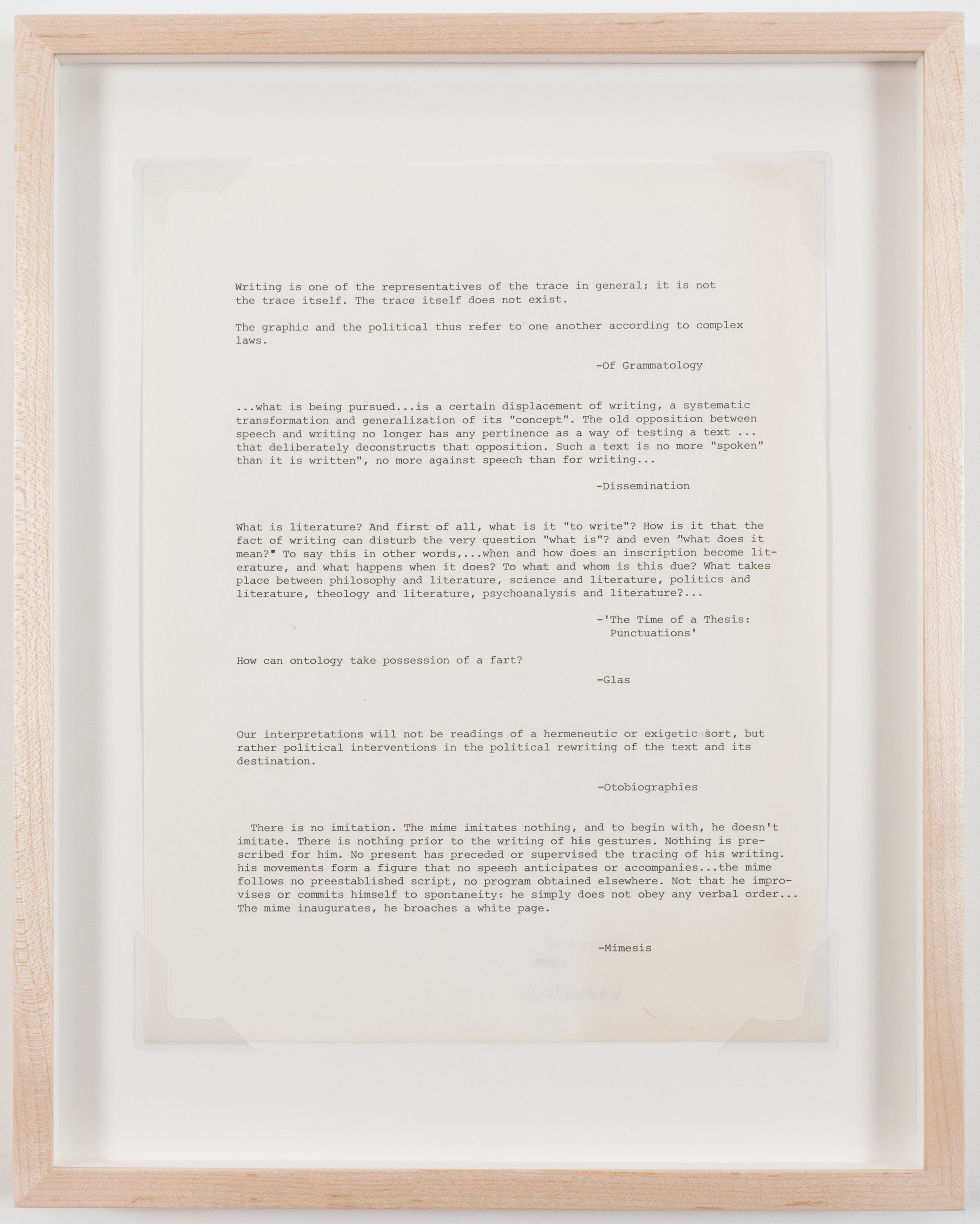
Stuart Sherman’s “Trilogy” at the Kitchen
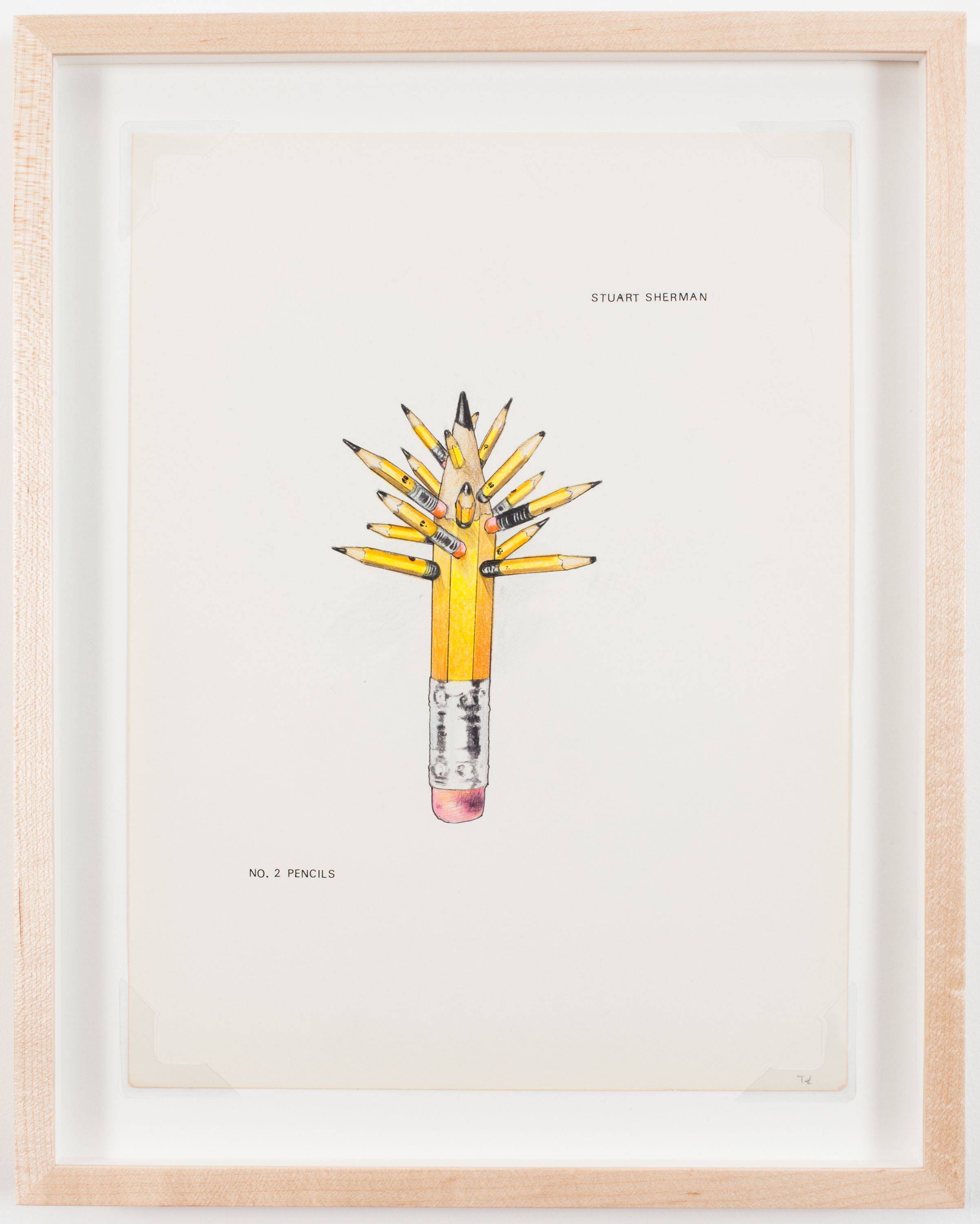
colored pencil and ink on paper
12 x 9 in
30.5 x 23 cm
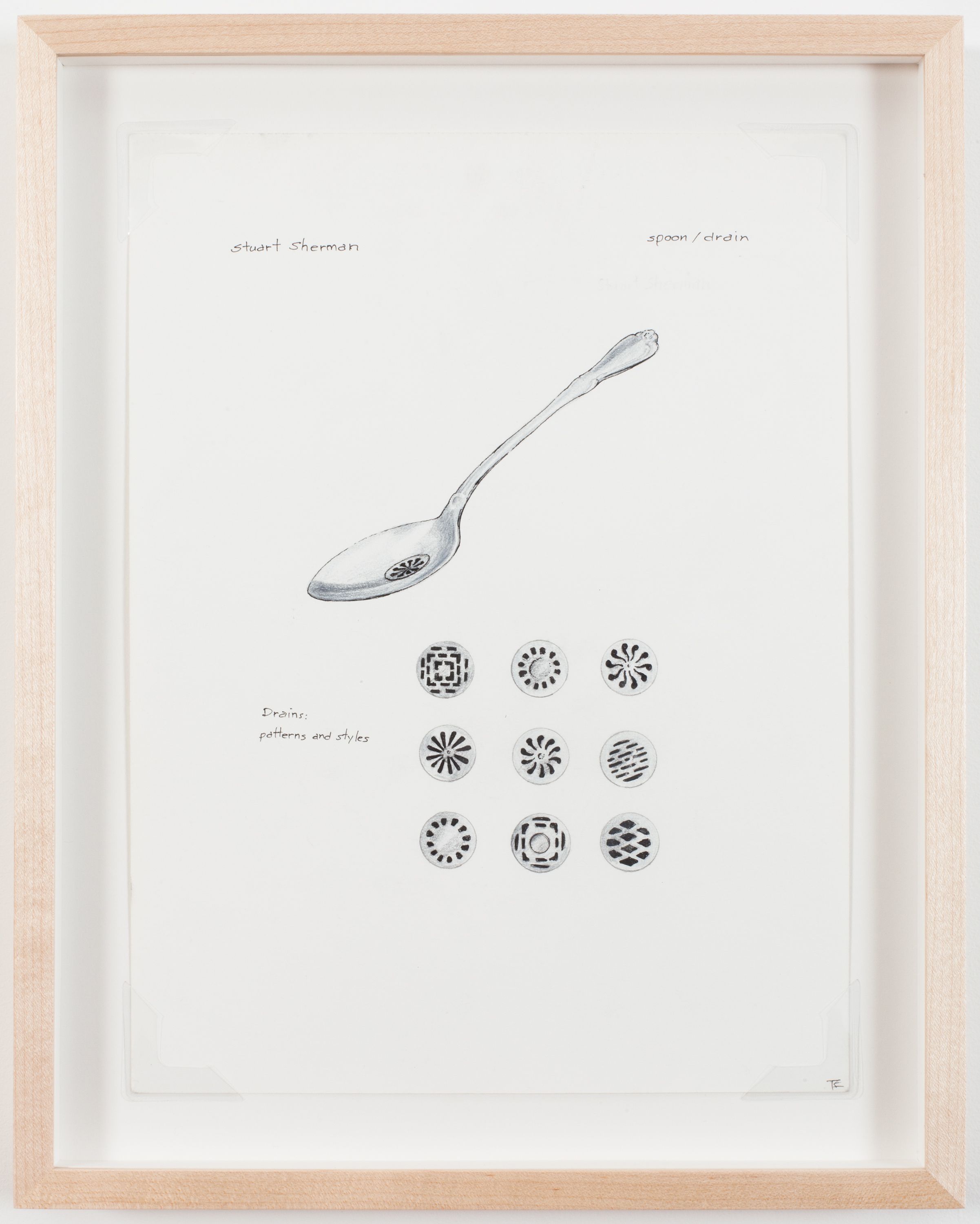
colored pencil and ink on paper
12 x 9 in
30.5 x 23 cm
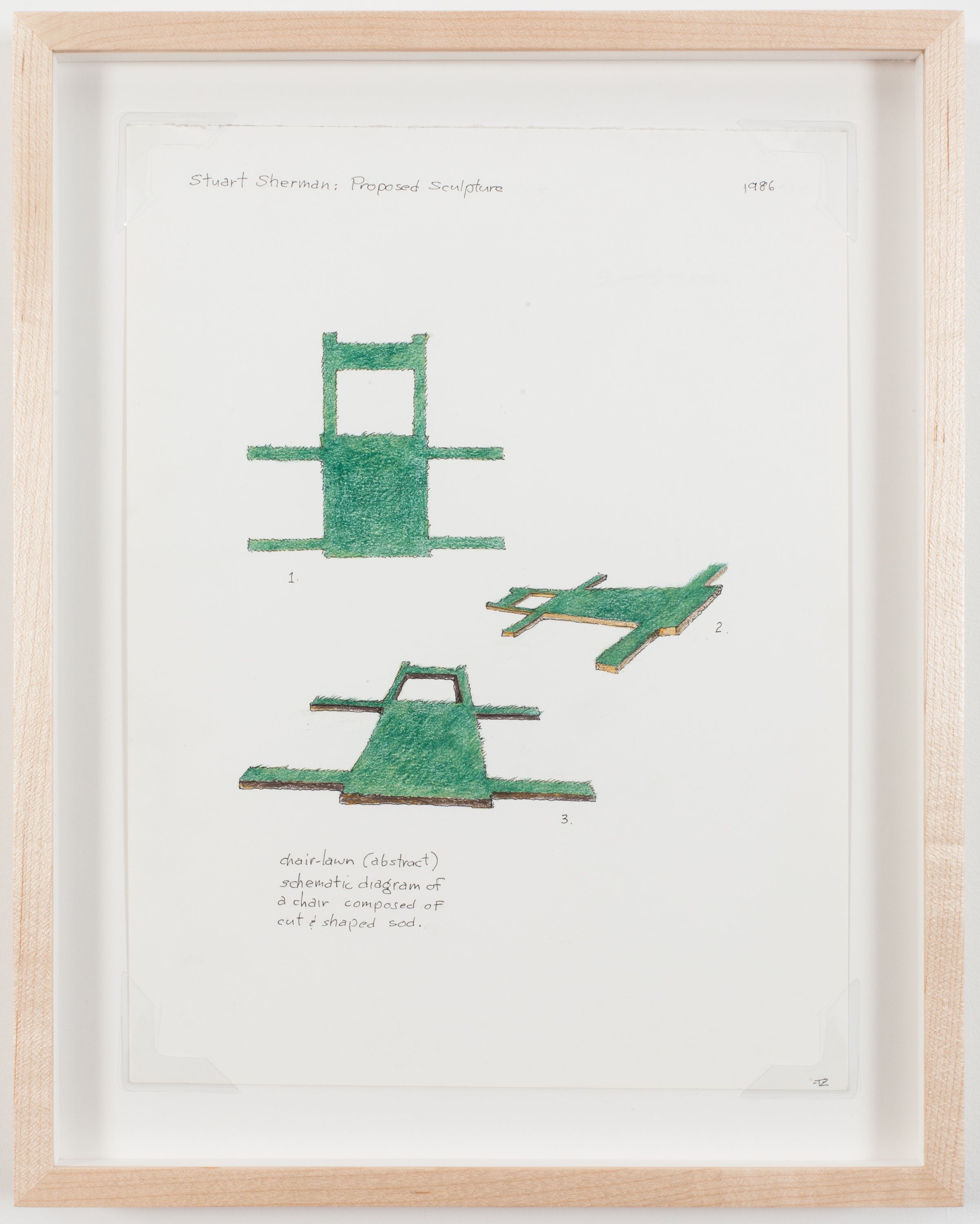
colored pencil and ink on paper
12 x 9 in
30.5 x 23 cm
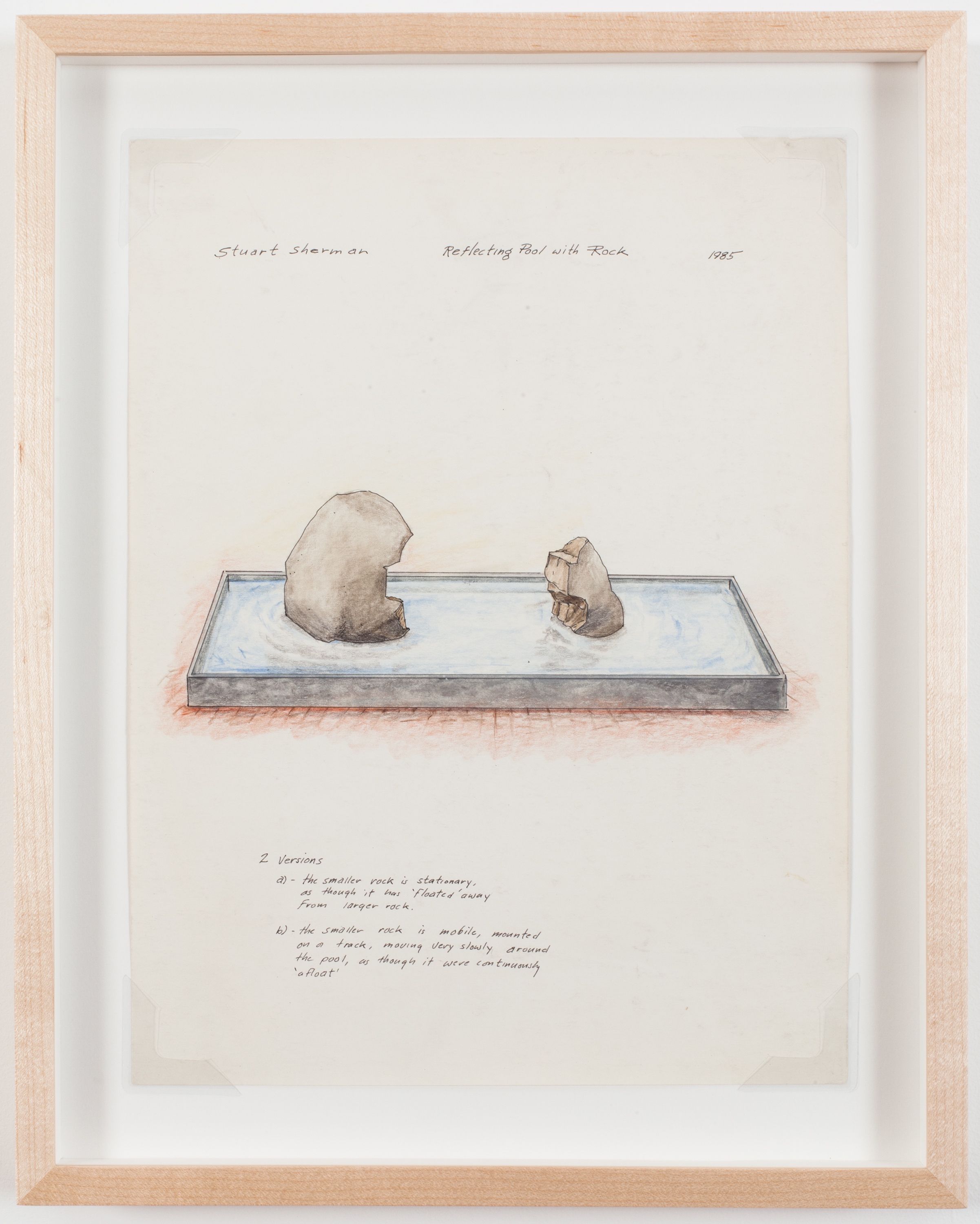
colored pencil and ink on paper
12 x 9 in
30.5 x 23 cm
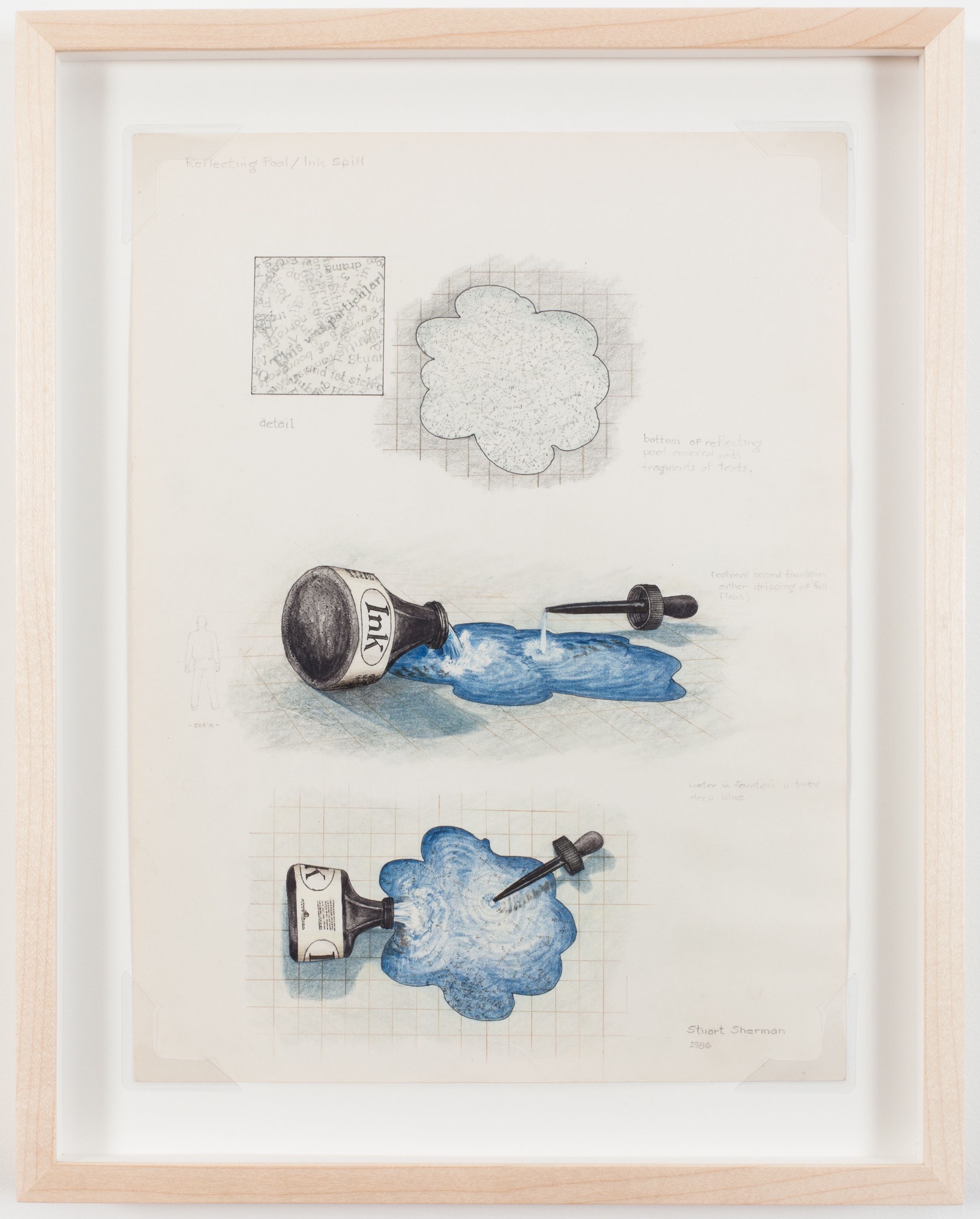
colored pencil and ink on paper
12 x 9 in
30.5 x 23 cm
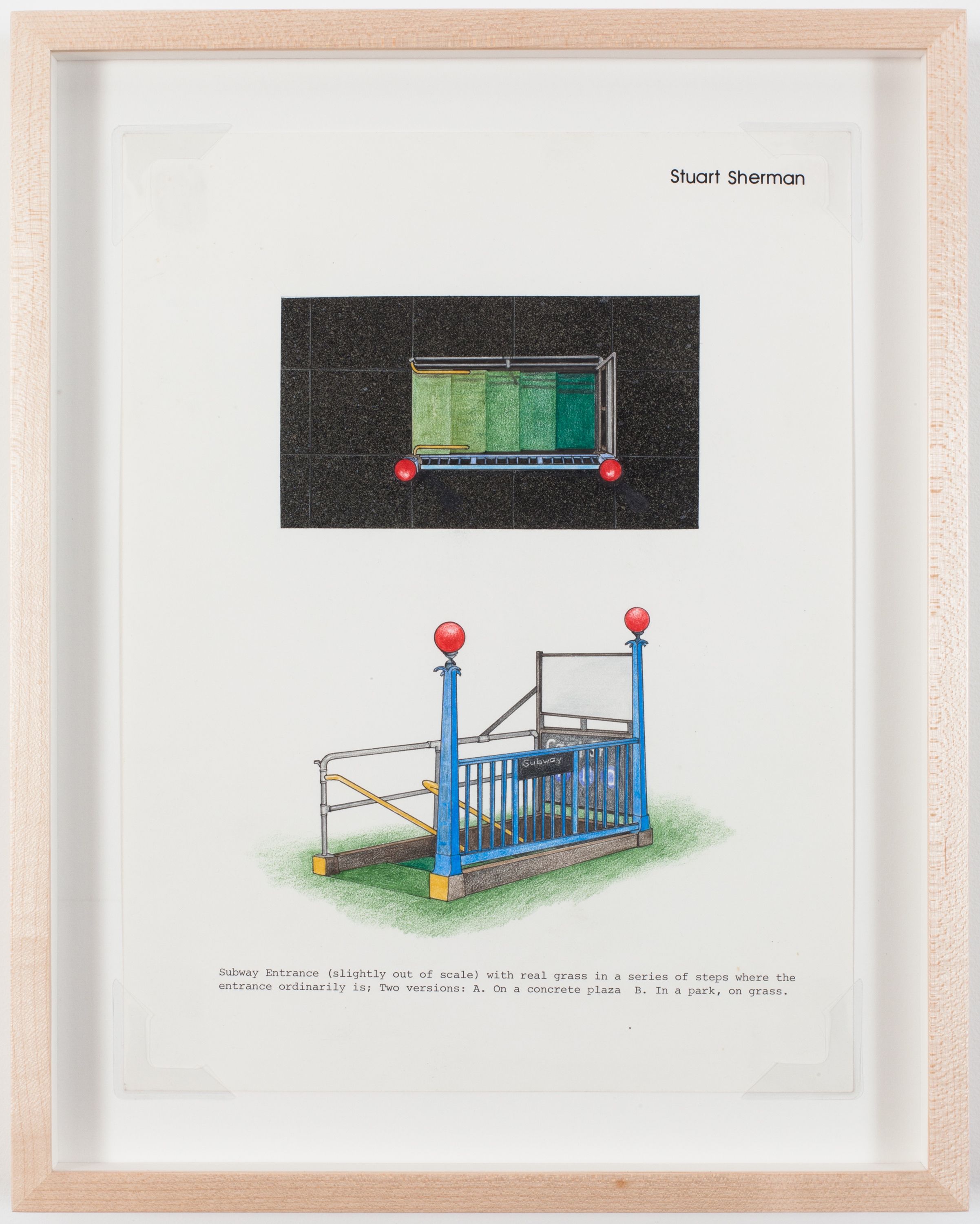
colored pencil, enamel and ink on paper
12 x 9 in
30.5 x 23 cm
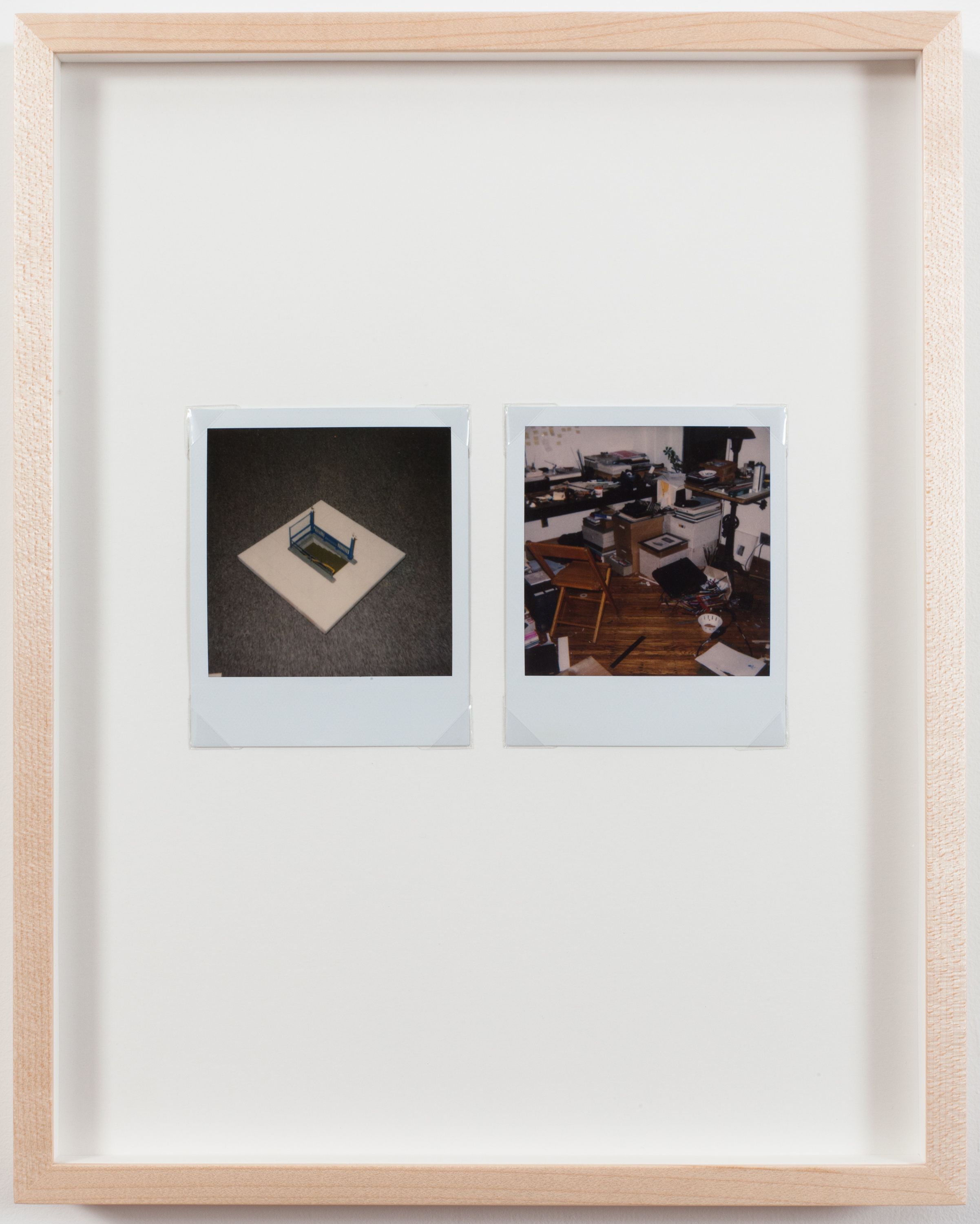
Thomas Zummer’s studio, c. 1989
polaroids
4.25 x 3.5 in each
10.5 x 8.5 cm each
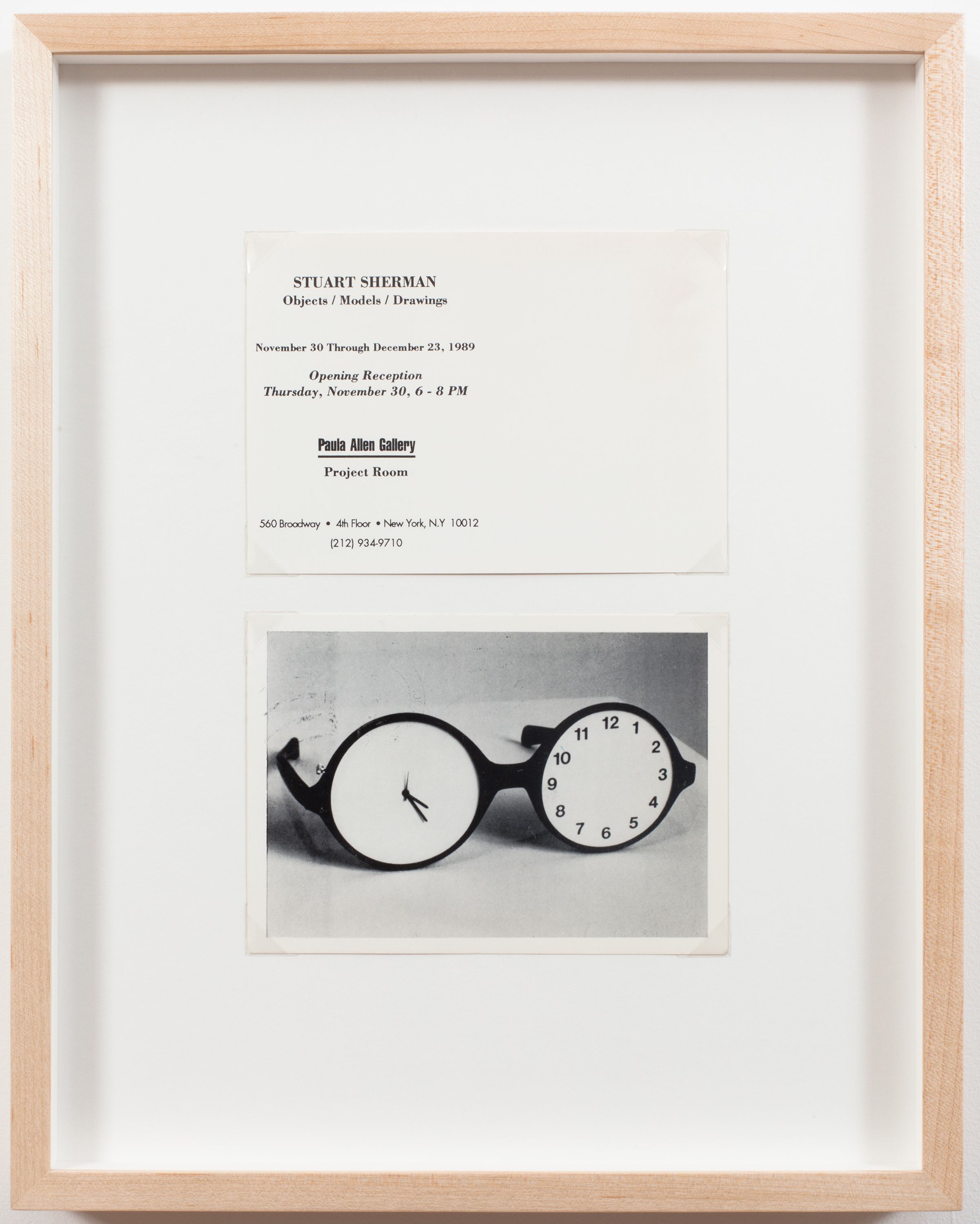
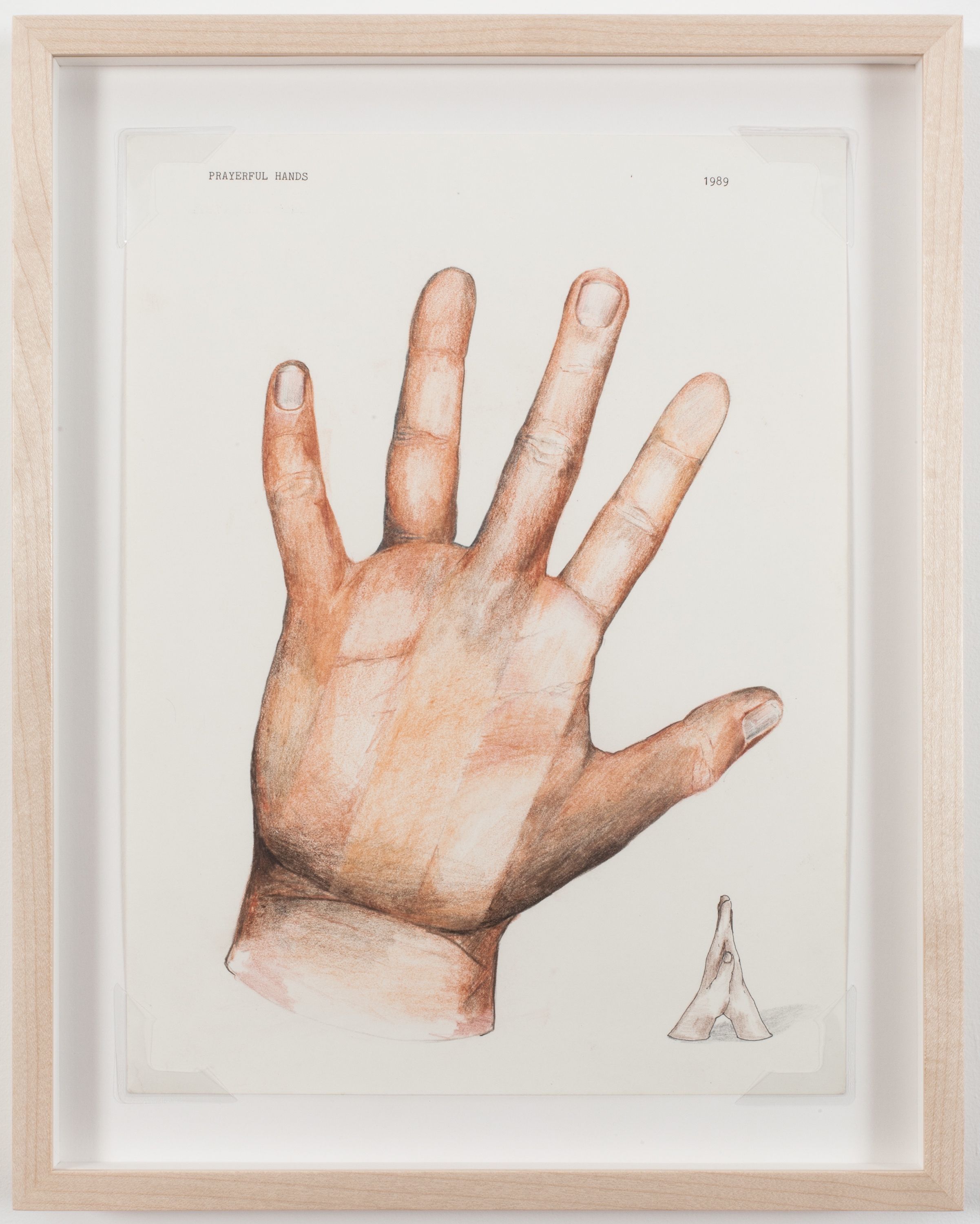
colored pencil and ink on paper
12 x 9 in
30.5 x 23 cm

colored pencil and ink on paper
12 x 9 in
30.5 x 23 cm
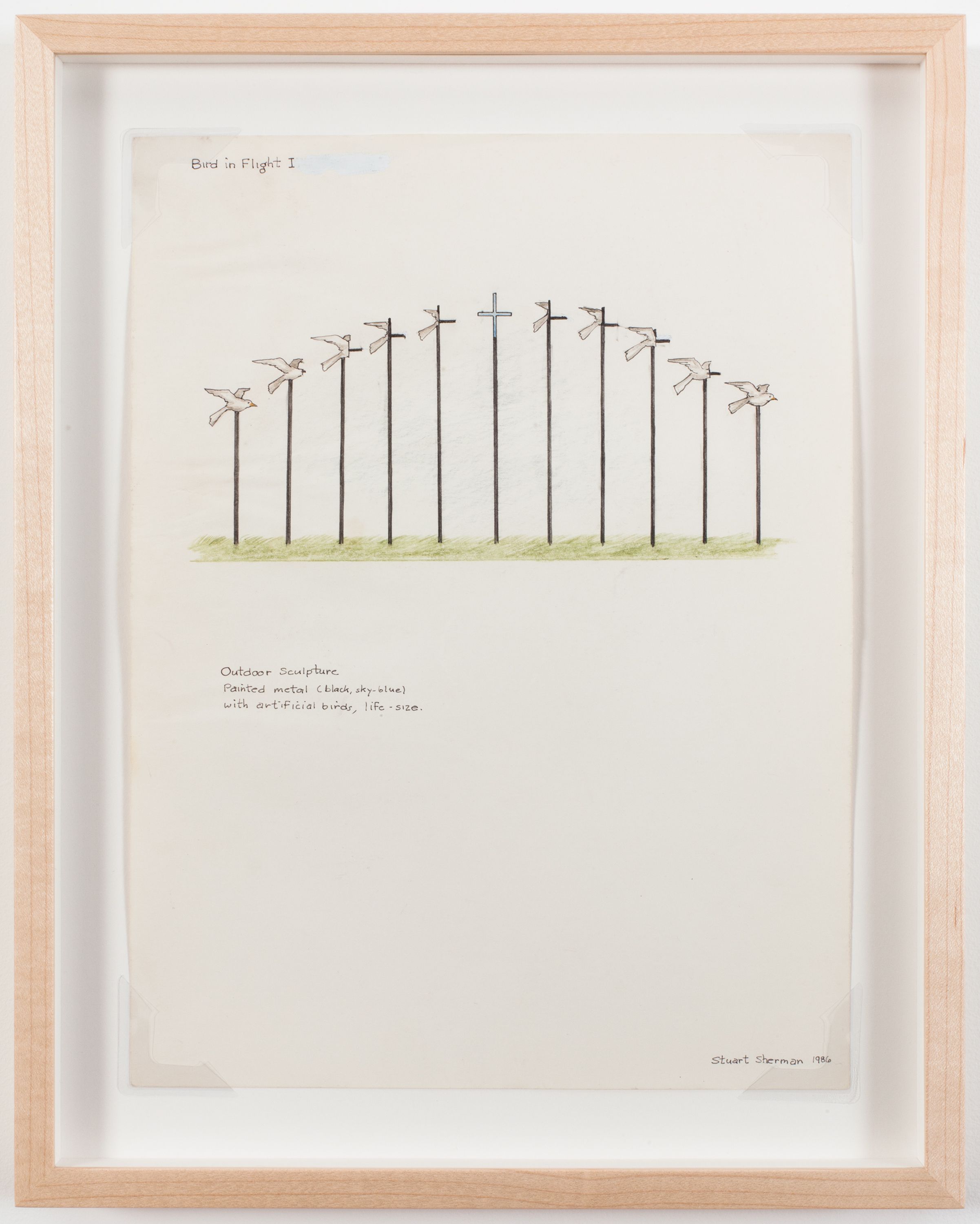
colored pencil and ink on paper
12 x 9 in
30.5 x 23 cm

colored pencil and ink on paper
12 x 9 in
30.5 x 23 cm
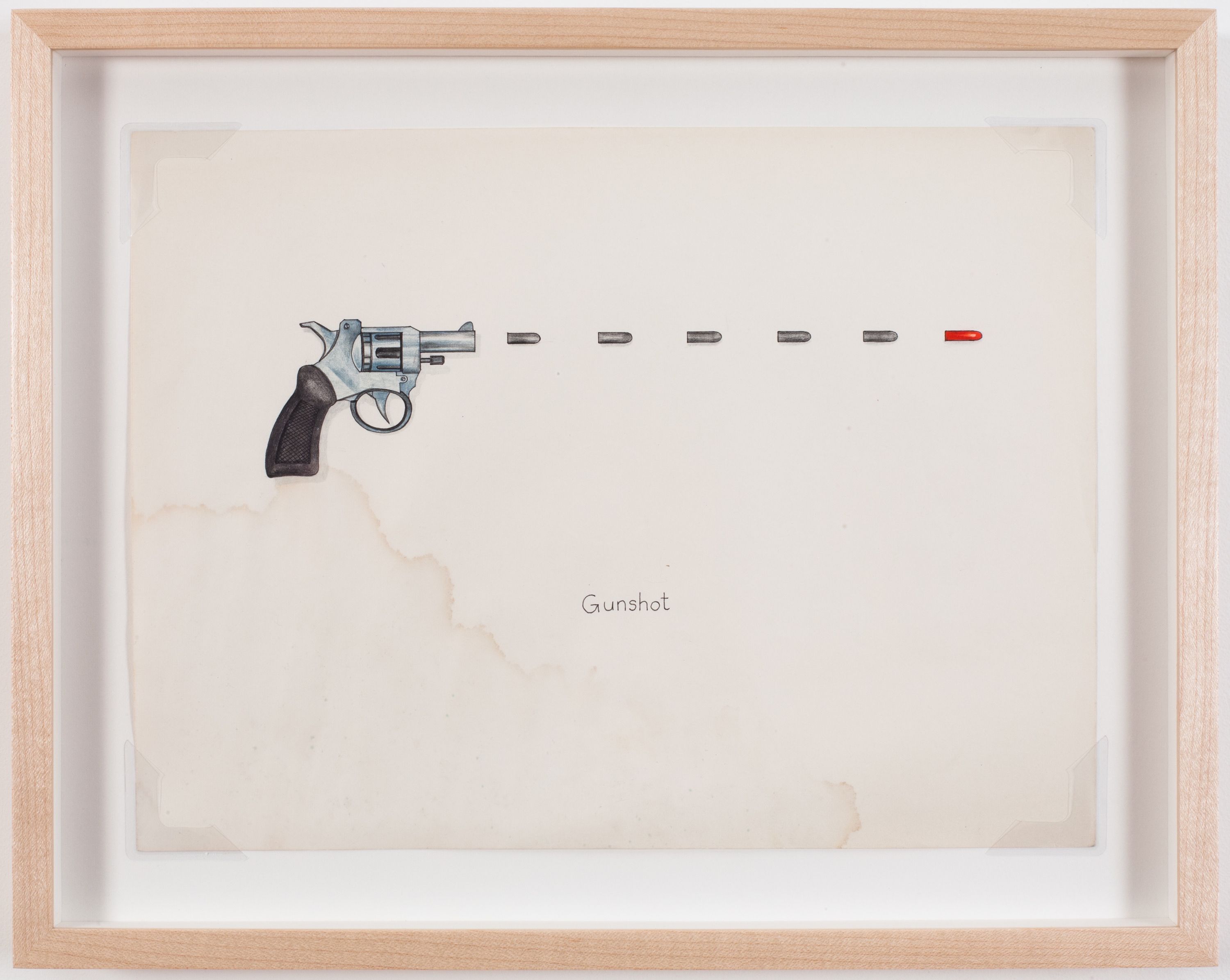
colored pencil and ink on paper
9 x 12 in
23 x 30.5 cm
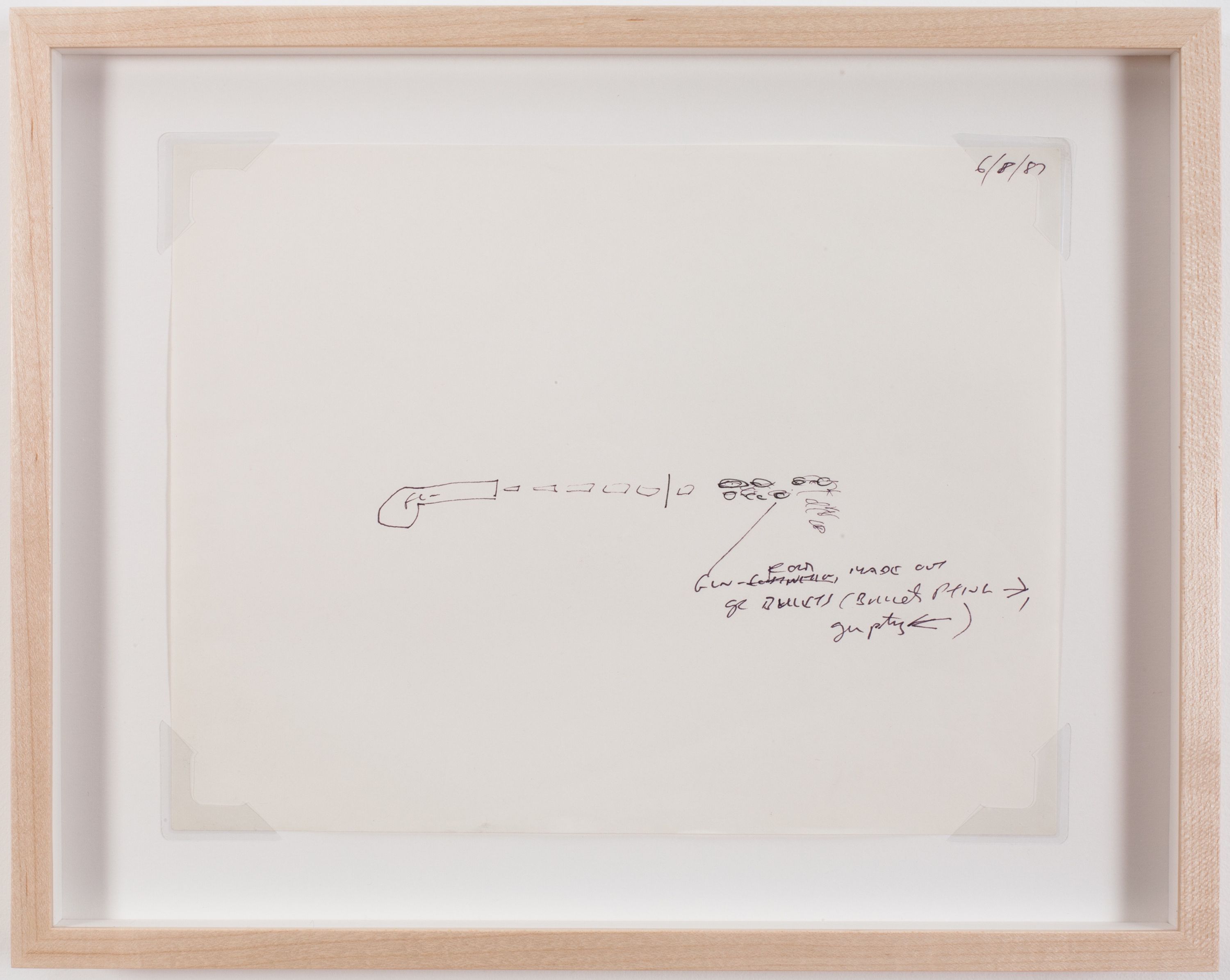
ink on paper
8 x 10 in
20.5 x 25.5 cm
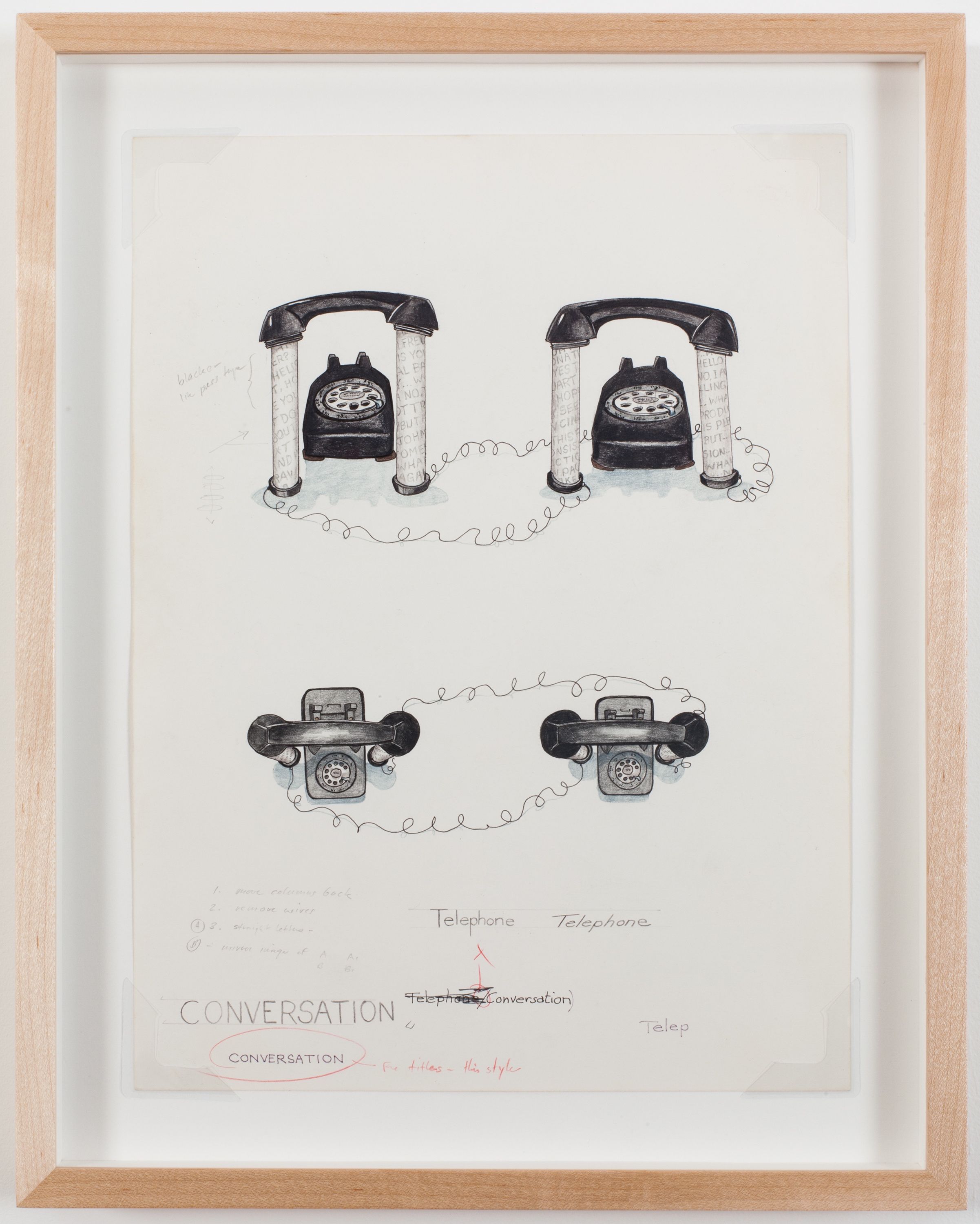
colored pencil and ink on paper
12 x 9 in
30.5 x 23 cm
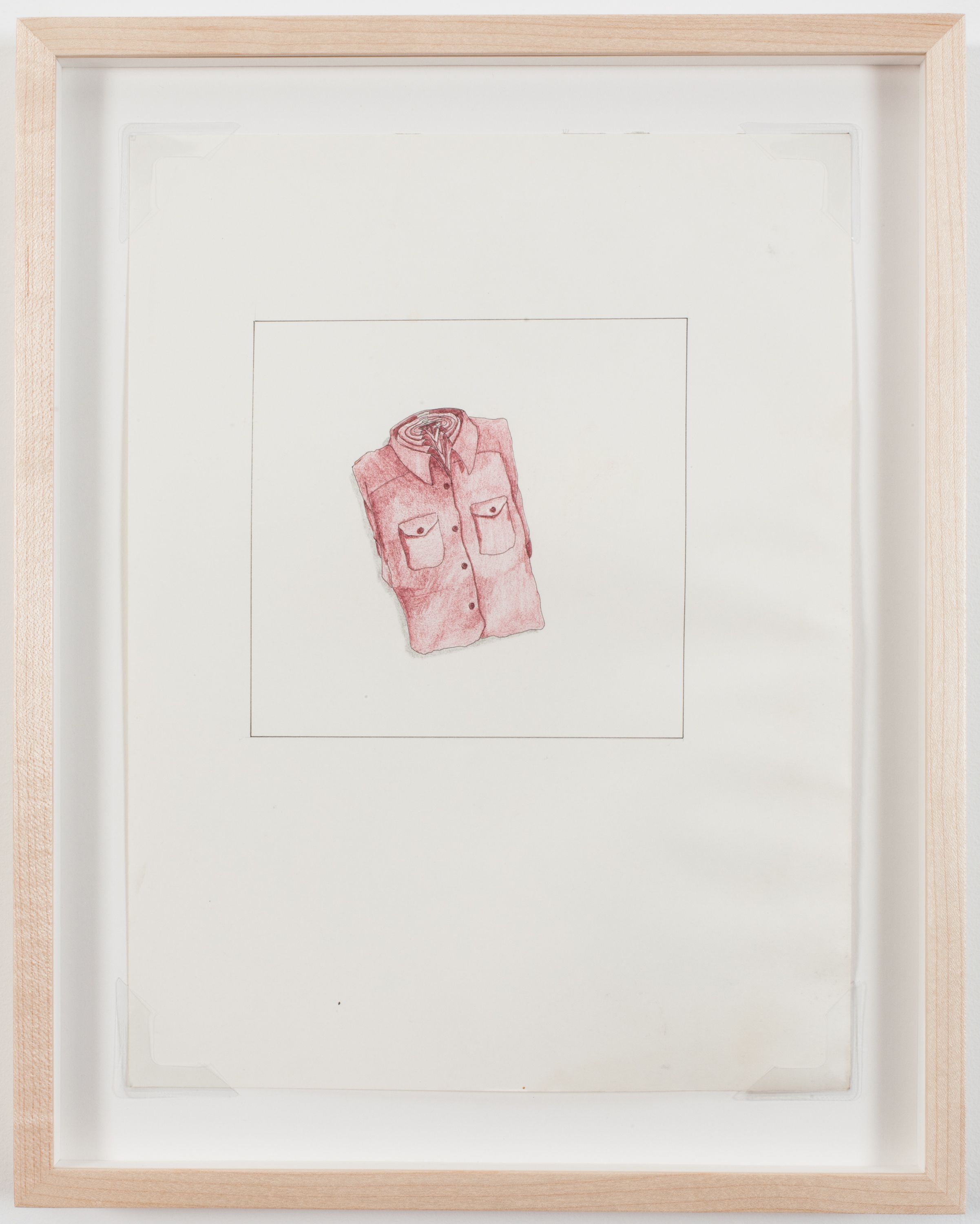
colored pencil and ink on paper
12 x 9 in
30.5 x 23 cm

colored pencil and ink on paper
12 x 9 in
30.5 x 23 cm
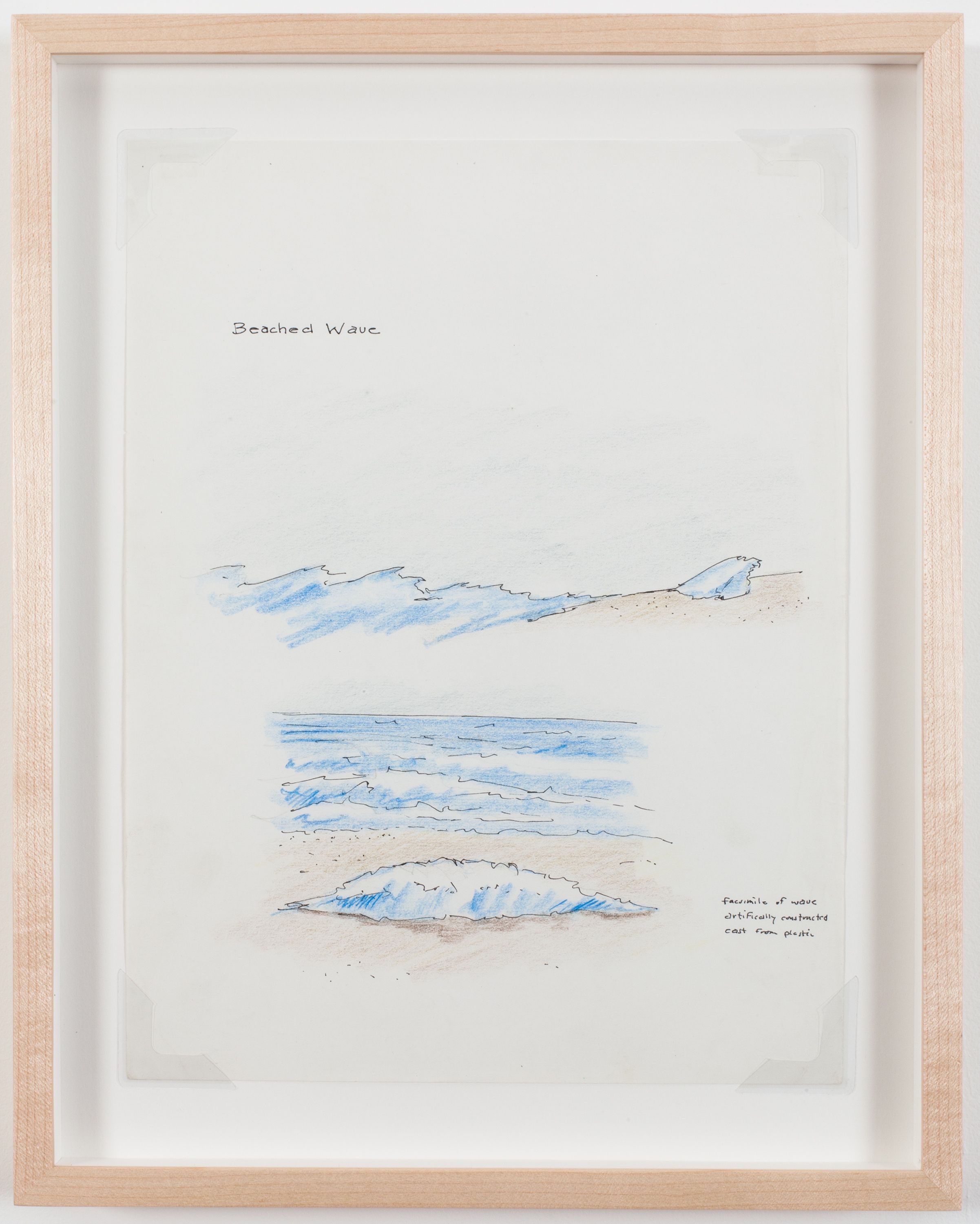
colored pencil and ink on paper
12 x 9 in
30.5 x 23 cm